Dr. Ehrlich's Magic Bullet

Brief Synopsis
Cast & Crew
William Dieterle
Edward G. Robinson
Ruth Gordon
Otto Kruger
Donald Crisp
Maria Ouspenskaya
Film Details
Technical Specs

Synopsis
Discharged from his Berlin hospital post in the latter half of the 19th century for opposing the primitive medical treatments perscribed by his superiors, Dr. Paul Ehrlich goes on to develop a dye which delineates the tubercule bacillus . For his achievement, Ehrlich is awarded a position by the famous research bacteriologist Dr. Robert Koch. Ehrlich's exposure to tuberculosis has infected him with the disease, however, and he is forced to travel to Egypt for his health. There, while treating a snake bite victim, he conceives of the idea of anti-toxins, and upon his return to Germany, Ehrlich works with his friend, Dr. Emil von Behring, to develop a serum for diptheria. After their development of a vaccination that arrests the diptheria epidemic, Ehrlich pursues his dream of finding a "magic bullet" to destroy invading microbes. He spends fifteen years developing a theory of how nature fights disease, and for his efforts is awarded the Nobel Prize and an institute in which to work. There he launches a series of experiments which apply his theory to the task of curing disease, but his efforts are attacked by a recalcitrant medical community, led by his old friend Behring. Assailed on two fronts, Ehrlich struggles to develop a cure for syphilis while fighting to keep his budget intact. When his budget is cut in half, he turns to wealthy widow Franziska Speyer for funding. Six hundred-and-six experiments later, he discovers the cure for syphilis, and in the hope of saving lives, is persuaded to release the formula before testing is completed. Finding himself under atack when a few patients die from adverse reaction, Ehrlich is finally vindicated in a court trial led by Behring. The struggle has drained the doctor's health, however, and Ehrlich pays for the development of his miracle cure with the cost of his own life.

Director
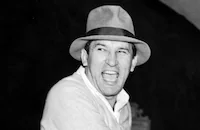
William Dieterle
Cast

Edward G. Robinson

Ruth Gordon

Otto Kruger
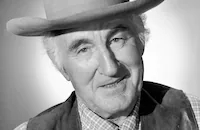
Donald Crisp

Maria Ouspenskaya

Montagu Love

Sig Rumann
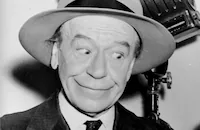
Donald Meek

Henry O'neill

Albert Basserman

Edward Norris
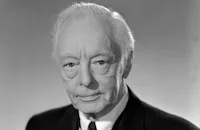
Harry Davenport

Louis Calhern

Louis Jean Heydt

Charles Halton

Irving Bacon
Douglas Wood
Theodor Von Eltz
Hermine Sterler

John Hamilton

Paul Harvey
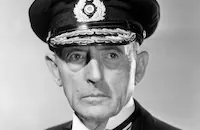
Frank Reicher
Torben Meyer
Louis Arco
Wilfred Hari
John Hendrick

Ann Todd
Rolla Stewart
Ernst Hausman
Stuart Holmes

Robert Stevenson
Greta Meyer

Howard Mitchell
Walter O. Stahl
Elaine Renshaw
Frank Lackteen
Norman Phillips Jr.
Louis Adlon
Hedwiga Reicher
Louise Golm
Gisela Werbiseck
Gretl Sherk
Frank Mayo

Herbert Anderson
Frank Jaquet
William Von Brincken
Paul Phillips
Rolf Lindau
Wolfgang Zilzer
Brandon Tynan
Robert Strange
Ludwig Hardt
Egon Brecher
Cliff Clark
Fred Mellinger
Crew
Al Alleborn
Robert Burks
Norman Burnside
Norman Burnside
Leo F. Forbstein
Stanley Fox
Hugo Friedhofer
Heinz Herald
James Wong Howe
John Huston
Robert B. Lee
Warren Low
Irving Rapper
Wolfgang Reinhardt
Howard Shoup
Max Steiner
Jack Sullivan
Perc Westmore
Carl Jules Weyl

Photo Collections
Videos
Movie Clip


Trailer
Film Details
Technical Specs

Award Nominations
Best Writing, Screenplay
Best Writing, Screenplay
Best Writing, Screenplay
Articles
Dr. Ehrlich's Magic Bullet
Ehrlich was a Nobel-Prize winning doctor most famous for discovering the cure for syphilis. He also helped develop the diphtheria shot and developed radically new theories for applying chemistry to medical science. His story made for a typically top notch Warner Bros. prestige picture of the time, shot by master cameraman James Wong Howe, scored by Max Steiner, produced by Hal Wallis and directed by William Dieterle. For Dieterle, Ehrlich was the fourth of five A-level biographies he made in a five-year period. (This being the studio era, he also directed six other movies in the same span.) A German director, he had come to Hollywood in 1930 and quickly climbed the ranks at Warners, directing The Hunchback of Notre Dame (1939) just before tackling Ehrlich. His talent let him get away with some bizarre habits, such as never starting a film unless his astrologer cleared it, and always wearing white gloves on the set.
Producer Hal Wallis wrote in his memoir that one of the reasons he was keen to make this film, despite objections from the Hays Office over the syphilis subject matter, was to help refute a widely-quoted 1938 statement by Adolf Hitler in which he said, "a scientific discovery by a Jew is worthless." (Ehrlich was a German Jew.) In researching Dr. Ehrlich's life, Wallis acquired letters, notes and clippings from the doctor's widow, all of which were used by writers Norman Burnstine and Heinz Herald to fashion a script. When Wallis found their draft too stiffly written, he brought in John Huston for a rewrite. Huston, an up-and-coming writer at that time, had recently worked on the scripts for Jezebel (1938) and Juarez (1939). "With his gift for writing fluid, idiomatic dialogue, he did a fine job of making the story smooth and believable and all the characters very much alive," remembered Wallis. The script was ultimately nominated for an Academy Award.
But it's Edward G. Robinson's movie all the way. He ages 35 years in the story and keeps his portrayal personable and convincing. The New York Times review was typical: "It is a rounded gem of portraiture, electric in its attractiveness, astonishingly apart from the manneristic screen behavior of Little Caesar [1931]," wrote critic Frank Nugent. Robinson himself later recalled his intense approach to the role: "While doing Ehrlich, the world outside seemed to vanish, or at least diminish in importance. During the filming I kept to myself, studied the script, practiced gestures before the mirror, read about his life and times, studied pictures of the man, tried to put myself in his mental state, tried to be him."
Producer: Wolfgang Reinhardt, Hal B. Wallis, Jack L. Warner
Director: William Dieterle
Screenplay: Norman Burnstine, Heinz Herald, John Huston
Cinematography: James Wong Howe
Film Editing: Warren Low
Art Direction: Carl Jules Weyl
Music: Max Steiner
Cast: Edward G. Robinson (Dr. Paul Ehrlich), Ruth Gordon (Hedwig Ehrlich), Otto Kruger (Dr. Emil Von Behring), Donald Crisp (Minister Althoff), Maria Ouspenskaya (Franziska Speyer), Montagu Love (Professor Hartman).
BW-104m. Closed captioning.
by Jeremy Arnold

Dr. Ehrlich's Magic Bullet
Quotes
Trivia
Notes
The working titles of this film were The Life of Dr. Ehrlich, A Magic Bullet, Test 606 and The Story of Dr. Ehrlich's Magic Bullet. An onscreen prologue reads: "This picture is dedicated to the memory of Dr. Paul Ehrlich whose dream it was to create out of chemicals 'magic bullets' with which to fight the scourges of mankind...and this is the story of his devotion to that ideal." The film ends with the following written epilogue: "...And the temples to his memory are the bodies of human beings purified and made whole." The reviews note that the screenplay was based upon material in the possession of the Ehrlich family.
According to materials contained in the MPPDA/PCA files at the AMPAS Library, the PCA was reluctant to award a certificate of approval to this film. The code specifically forbade the use of venereal disease as a subject for films and consequently, executive producer Hal Wallis argued that the picture was not about venereal disease but a biographical film about Dr. Ehrlich. Wallis compared the film to The Life of Emile Zola and The Story of Louis Pasteur. In fact, the original title of the film, Test 606 was rejected by the MPPDA Title Committee because it referred to the cure for syphilis. The studio then changed the title to Dr. Ehrlich's Magic Bullet, thus changing the focus of the film to Dr. Ehrlich's achievements rather than his cure for syphilis. Although Joseph I. Breen, director of the PCA, accepted Wallis's argument, he worried that if the picture was awarded a certificate, it would open up the topic of venereal disease for discussion. In order to win approval, Wallis appealed to Will H. Hays, the president of the MPPDA, who issued a special executive order allowing the picture to be made. Hays directed the studio to minimize all references to syphilis and reduce it to an incident rather than the subject of the picture. He also instructed the studio to delete all scenes dealing with the treatment of syphilis and to refrain from mentioning the disease in advertising and publicity campaigns. The film was rejected in Peru and received an "adult permit" in England with the proviso that all use of the word syphilis be deleted from the film. John Huston, Heinz Herald and Norman Burnside were nominated for an Academy Award in the Writing (Original Screenplay) category.















